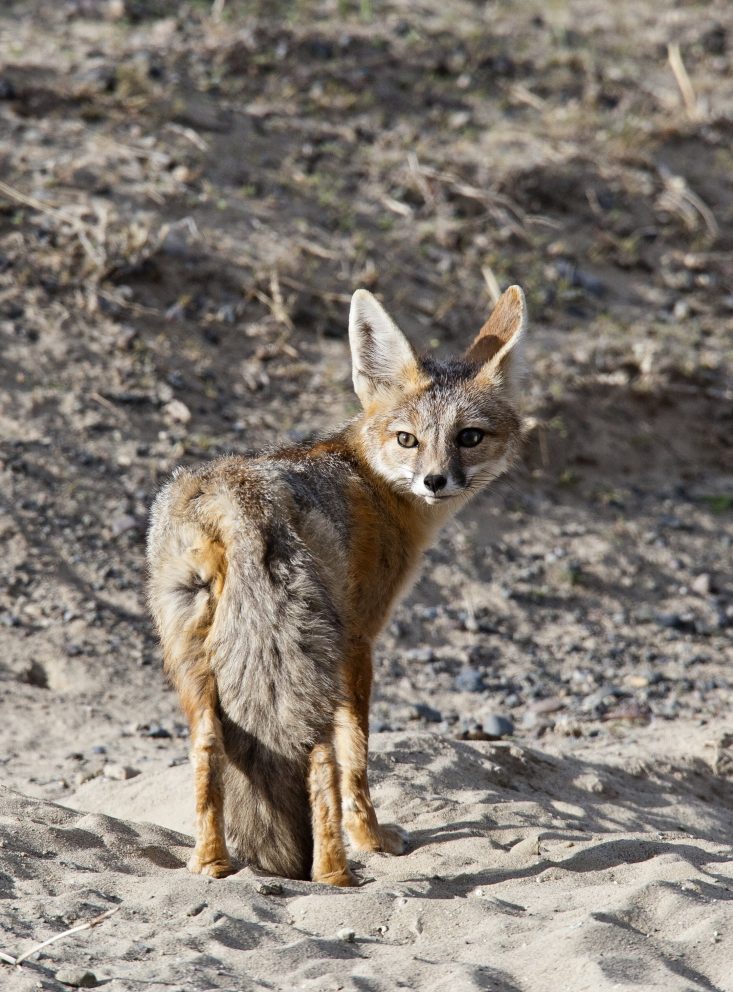- SCIENTIFIC NAME
- Vulpes macrotis
- CLASSIFICATION
- Mammal
- LIFE SPAN
- 5-7 Years
- SIZE
- 12-20” | 4-5lbs
- STATE CONSERVATION STATUS
-
- State Protected
- FEDERAL CONSERVATION STATUS
- Least Concern
- GAME STATUS
- Game
- GAME TYPE
- Furbearer
- Washoe
- Humboldt
- Pershing
- Churchill
- Mineral
- Lyon
- Douglas
- Carson City
- Storey
- Elko
- Lander
- Eureka
- White Pine
- Esmeralda
- Nye
- Lincoln
- Clark
Habitat & Range
Kit Foxes can be found in the southwestern United states and into central Mexico. In Nevada, they live in the Mojave Desert where there are flat, arid lands with abundant bushes and desert scrub.
- Cold desert shrubland and sagebrush
- Grasslands
- Mojave desert
Threats
- Habitat Degradation
- Habitat Loss
- Predation
Natural History
Kit Foxes are primarily carnivorous, eating rodents, rabbits, carrion and sometimes fruits. If open water is unavailable, they can absorb sufficient water from the animals and plants in their diet. Their intricate dens are used for protection against predators and weather, as well as a place to raise their young, called “pups.” In September and October, the female will prepare a natal den, where the male will meet the female. Pair bonds last at least one breeding season. After birth, parents bring food to the dens for the pups. The pups emerge from the dens when they are about five weeks old then forage alongside the parents once they reach four months.
Fun Facts














